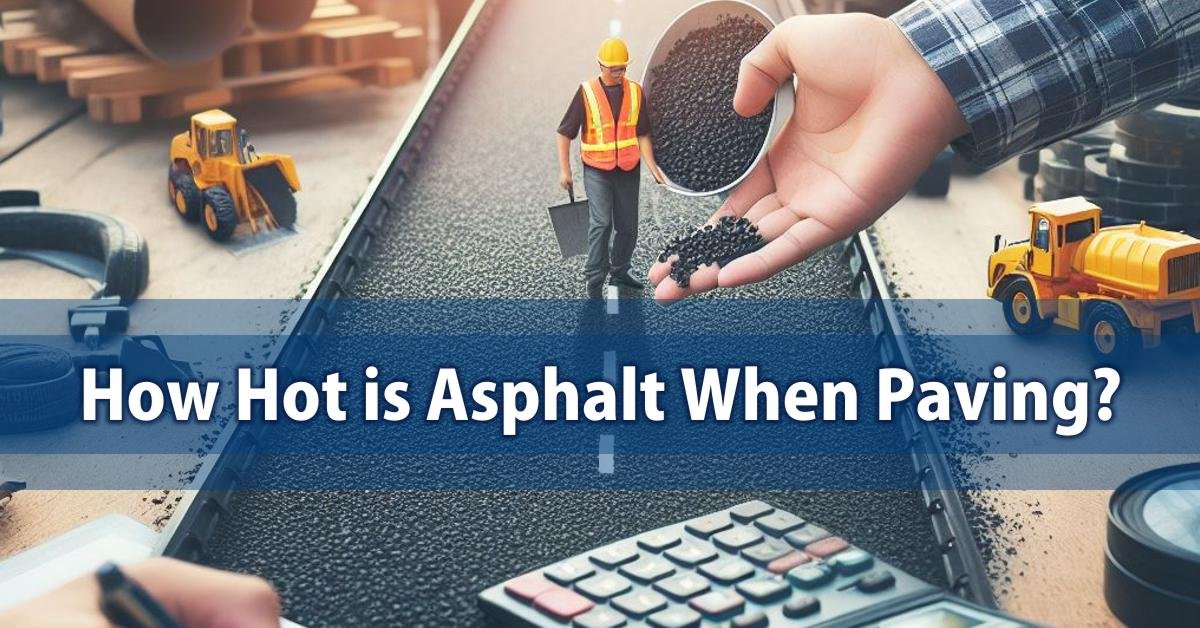If you’re building a new road or resurfacing an existing one, determining the exact quantity of asphalt needed is crucial, my friend. Trust me, as a civil engineer who has overseen lengthy highway projects, even a small miscalculation can lead to major headaches down the line.
But don’t sweat it! In this article, I’ll walk you through a simple step-by-step process to accurately measure the tons of hot mix asphalt required for your particular paving job.
With some handy tips and tricks, you’ll be estimating asphalt amounts precisely to ensure your road construction proceeds smoothly from start to finish.
Why Calculating Asphalt Quantity Matters
Getting your asphalt quantity right from the start ensures:
Prevent Shortages and Delays
You have adequate material on hand to complete paving work as per plans. No unexpected shortfalls that bring pavers to a grinding halt!
Making sure you order enough asphalt means your pavers won’t suddenly run out mid-project and come to a screeching halt while you scramble to get extra delivered ASAP. Been there, done that before – and let me tell you, it’s zero fun having your crews sitting idle with partially paved roads waiting for material. The extra headache you definitely want to avoid!
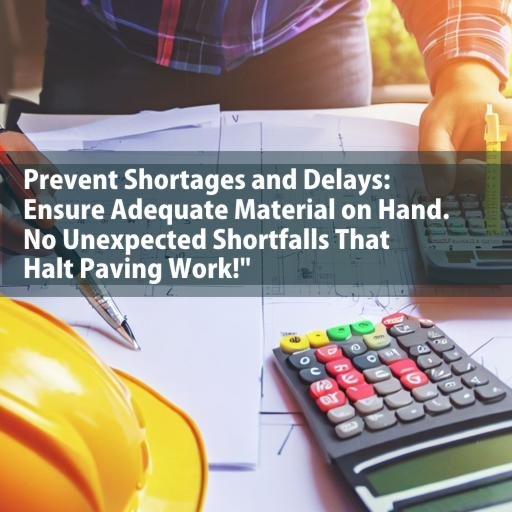
Getting your measurements right from the start ensures you’ll have just the right amount of hot mix on hand to complete the paving work smoothly according to plan. No unexpected “Oh crap, we’re running low!” moments that throw off schedules and budgets. You’ll breeze from start to finish with seamless asphalt material supply, allowing your pavers to do their job efficiently.
Enable Accurate Budgeting
Your cost estimates reflect the true asphalt requirements. No budget overruns from incorrect projections. Get Your Budget Right Without Nasty Surprises Always.
Having the exact asphalt quantity measurements allows you to estimate costs precisely too. You can accurately factor in expenses for materials, transportation, equipment rentals, labor, and all the rest that goes into paving. No surprise budget overruns from underestimating tons required!
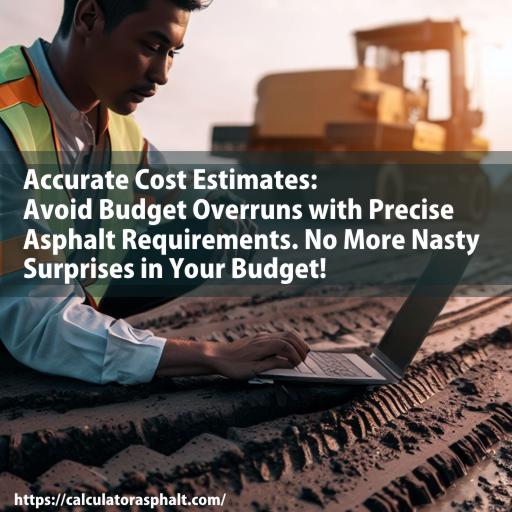
I’ve been on projects where the asphalt costs ended up way higher than projected because the calculations were off. And scrambling to cover the unplanned extra expenses is no fun, believe me. With precise quantity data, you avoid that mess and keep your budgeting nice and predictable. Your cost projections will perfectly reflect the real asphalt requirements – no scary discrepancies when the invoices start rolling in!
Ensure Proper Coverage and Thickness
The quantity calculated means the compacted asphalt depth and area paved match specifications. It is easy to get the Paving Thickness and Coverage You Paid For when you use the exact Asphalt calculator.
When you measure asphalt requirements accurately, it means you’ll end up with pavement that matches plans for both thickness and the total area covered. No skimping on quantity means no chance of compromising on quality either.
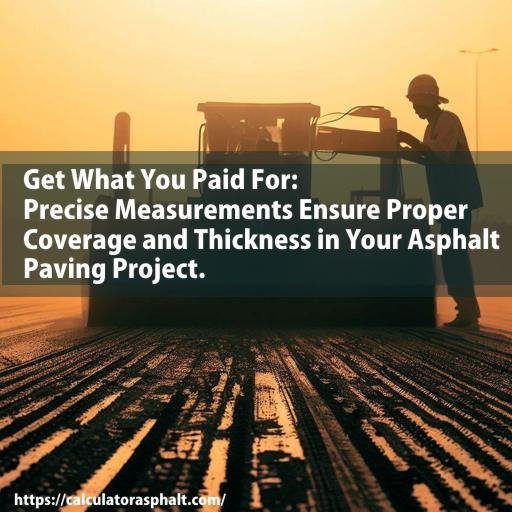
As a bonus, you avoid those awkward conversations when the client inspects the finished road and discovers the compacted depth or square yards paved is less than the contract. I’m sure you know how tough those talks can be about having to tear up and redo sections!
With precise material amounts, you pave fully and thickly to spec. The client gets exactly the high standard of the road they paid for, keeping everyone happy. And you increase chances of securing more work with them in the future by delivering top results. That’s a pavement win-win!
Step-by-Step Guide to Measuring Asphalt Quantity
Here’s how to determine asphalt quantity for roads in 5 simple steps:
Determine Road Dimensions
Calculate the total surface area by multiplying the length and width. For curved sections, break them into small rectangles to get dimensions.
First up – time to break out those measuring tapes and get the length and width of the whole stretch of road that needs paving. For straight sections this part’s simple – just multiply length times width to get the surface area.
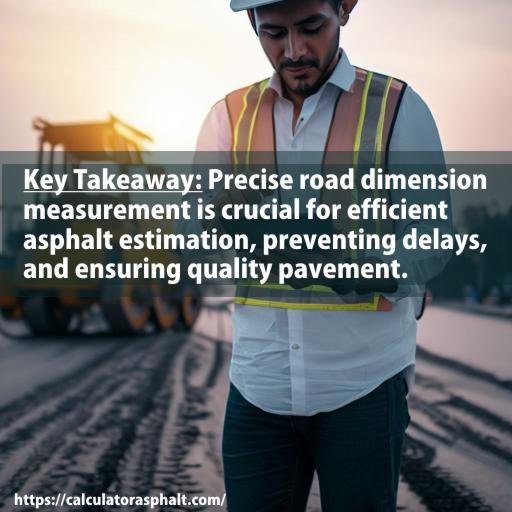
But for curved parts, we have to get a bit creative. The trick here is to break the bendy sections into a bunch of small, straight rectangles. Measure and calculate each rectangle individually. Then add up all the smaller area values – voila, you’ve got the total size of the curvy road!
It may sound complex but just take it step-by-step and soon you’ll be a pro at calculating the full area, even for twisting, winding roads. Area measurement is crucial for estimating how much asphalt you’ll need, so measure twice and get it right!
Specify Asphalt Thickness
Check plans for required asphalt depth. Typically 2-6 inches on highways.
Calculate Total Volume
Multiply the total area by thickness to get volume in cubic units.
Factor in Asphalt Density
Asphalt has a density of around 2,300 kg per cubic meter. Use your specific mix density if known.
Convert Volume to Tonnage
Based on density, convert the asphalt volume into metric tons required.
And that’s it! Our step-by-step method makes determining asphalt quantities for road paving projects straightforward.
Helpful Tips for Precise Asphalt Estimation
To further refine your estimate, keep these tips in mind:
Validate Measurements
Check area dimensions on-site before calculation. Accuracy is crucial.
Account for Compaction
Factor around a 5-15% reduction in volume post-compaction.
Include Design Factors
Consider elements like slope, drainage, etc. that may impact quantities.
Revalidate after Design Changes
Double-check measurements if the road design is modified.
Getting your asphalt quantity right from the planning stage avoids headaches when execution starts! Let me know if any sections need further explanation.
Last Words
Accurately estimating the exact asphalt quantities required is an essential first step in road construction. Our simple 5-step guide covers measuring key dimensions, calculating volumes, factoring density, and converting to metric tons. With a precise estimate, you can proceed confidently knowing you have adequate materials for efficient, smooth-running paving work.
Asphalt quantity calculations don’t have to be complex, my friend. I hope these tips help you master accurate estimation to execute successful road-building and resurfacing projects!
Frequently Asked Questions
How do I calculate asphalt quantity for an irregularly shaped area?
Break the irregular shape down into smaller regular rectangles and triangles. Calculate each portion separately, then sum them up to get the total area for quantity estimation.
How do I account for asphalt compaction in my calculations?
Reduce your total asphalt volume by 5-15% to factor in compaction by rollers before conversion to tons. The exact percentage depends on the mix and compaction equipment used.
What density value should I use for hot mix asphalt?
Use 2,300 kg per cubic meter as a standard density value if the exact density of your customized hot mix design isn’t known. Otherwise, input your precise lab-measured mix density.
How can I validate my asphalt quantity calculation?
Cross-verify your calculations with the project’s pavement area engineer or designer before procurement. Compare your totals with their independent estimates.
What if design changes are made that impact the road dimensions?
Any changes to the pavement length, width or thickness means revalidation of quantities is required. Use updated drawings for precise re-measurement.
